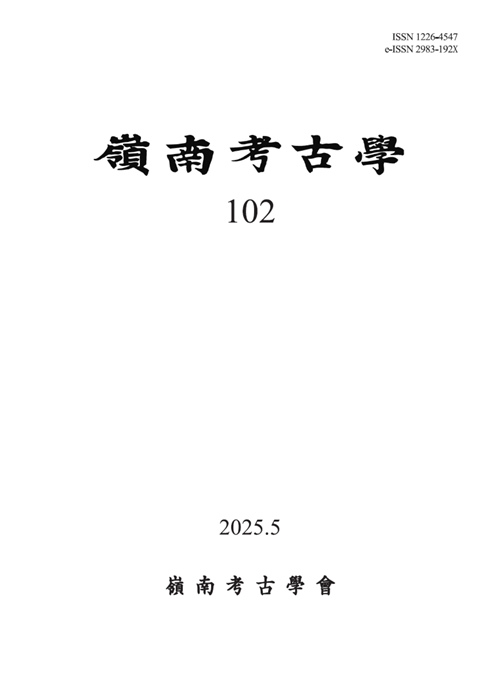이 글은 청동기시대 조·전기 유형을 주거형태별로 재편하고 이를 통해 집단의 규모, 생업형태, 사회구조 등의 변화를 간취하는데 주력하였다. 대상 자료는 영남지역을 총 세 개의 권역으로 나누고 71개소 유적 335동의 주거지 및 유물조합을 선정하여 분석하였다. ‘유형론’의 단점을 보완하고 집단을 상징하는 주거형태를 기준으로 각 유형을 전형과 변형 단계로 구분하였다. 전형을 이주 단계, 변형을 정착 이후 단계로 구분하여 인식하였다. 그리고 석기조성비 분석을 통해 유형별 생업형태와 그 변화의 추이를 추적하여 생계전략의 변화로 인식하였다. 그 결과, 초기 이주민인 전형 미사리유형은 농경의 비중이 낮고 이동성이 높은 ‘유동형수렵채집경제’, 가락동유형은 경작의 비중이 높고 이동성이 낮은 ‘정착형수렵채집경제’, 역삼동유형에 대해서는 농경의 비중이 가장 높은 정주 형태의 ‘농업경제’로 이해하였다. 이주 초기 각 유형의 전형을 빈포드(Binford 1980)가 제시한 ‘수렵채집민의 주거체계의 다양성 모델’에 적용하여 전형 미사리유형을 ‘포리져(foragers)’, 전형 가락동유형 및 역삼동유형을 ‘콜렉터(collectors)’적 성격이 짙은 집단으로 파악하였다. 로버트켈리(2019)가 제시한 수렵채집민의 이동성을 실효온도(ET) 및 일차생산(PP)을 통해 수치화하여 기원지와 비교하여 살펴보았고 주거형태를 통해 각 집단의 규모를 추정하여 이주 초기 생계전략의 다양성에 대해 살펴보았다. 다양한 민족지 사례와 비교를 통해 전형 미사리유형을 원시공동체에 의한 부계사회, 농업의 비중이 증가하고 집단의 규모가 큰 가락동·역삼동유형을 농업공동체에 의한 모계사회로 정의하였다. 그리고 변형 역삼동유형에서 등장하는 超세장방형 주거지에 대해 모계사회에서 보편적으로 등장하는 ‘롱하우스(longhouse)’로 인식하였다.
This study investigates the typological reclassification of Early to Middle Bronze Age material culture in the Yeongnam region of Korea by examining dwelling structures to infer corresponding subsistence patterns. The spatial-temporal scope encompasses the Early to Middle Bronze Age within the Yeongnam area, subdivided geographically into three zones. A comprehensive data set comprising 335 dwellings from 71 archaeological sites was selected for detailed examination. The study critically addresses the limitations inherent in traditional typological methods employed since the 1980s for interpreting Bronze Age archaeological contexts. Instead, dwellings are reorganized into archetypal and variant forms, reflecting temporal and cultural shifts linked to migration and settlement processes. Subsistence strategies were traced and defined through artifact assemblages associated with each dwelling type, conceptualized here as dynamic adjustments to changing ecological and social contexts. Consequently, the Misari type, representing early migrants, is characterized by a semisedentary, highly mobile hunter-gatherer adaptation. The Garakdong type, exhibiting increased agricultural activities alongside hunting-gathering practices, reflects a semisedentary, settled hunter-gatherer economy. The subsequent Yeoksamdong type, derived from the Garakdong tradition, demonstrates a fully sedentary agricultural economy, emphasizing intensive farming practices. Applying Lewis R. Binford's (1980) model for hunter-gatherer settlement diversity, the Misari type aligns with forager groups, while Garakdong and Yeoksamdong types correlate with collector groups. To verify these categorizations, quantitative analyses of mobility patterns were conducted following Robert Kelly's (2019) framework, utilizing Effective Temperature and Primary Productivity metrics. Misari-type societies, heavily reliant on hunting-gathering, were classified as patrilineal groups characterized by simpler social structures. In contrast, Garakdong and Yeoksamdong-type groups, marked by increased reliance on agriculture and larger social units, corresponded to matrilineal agricultural communities. Furthermore, Yeoksamdong dwelling forms closely resemble longhouse structures commonly associated with matrilineal, mixed-farming societies, highlighting broader patterns within prehistoric Korean social evolution.
Ⅰ. 머리말
Ⅱ. 조기의 개념과 유형의 정의
Ⅲ. 각 유형의 생업형태와 성격
Ⅳ. 청동기시대 조기 각 유형의 성격과 사회구조 시론
Ⅴ. 맺음말
(0)
(0)
